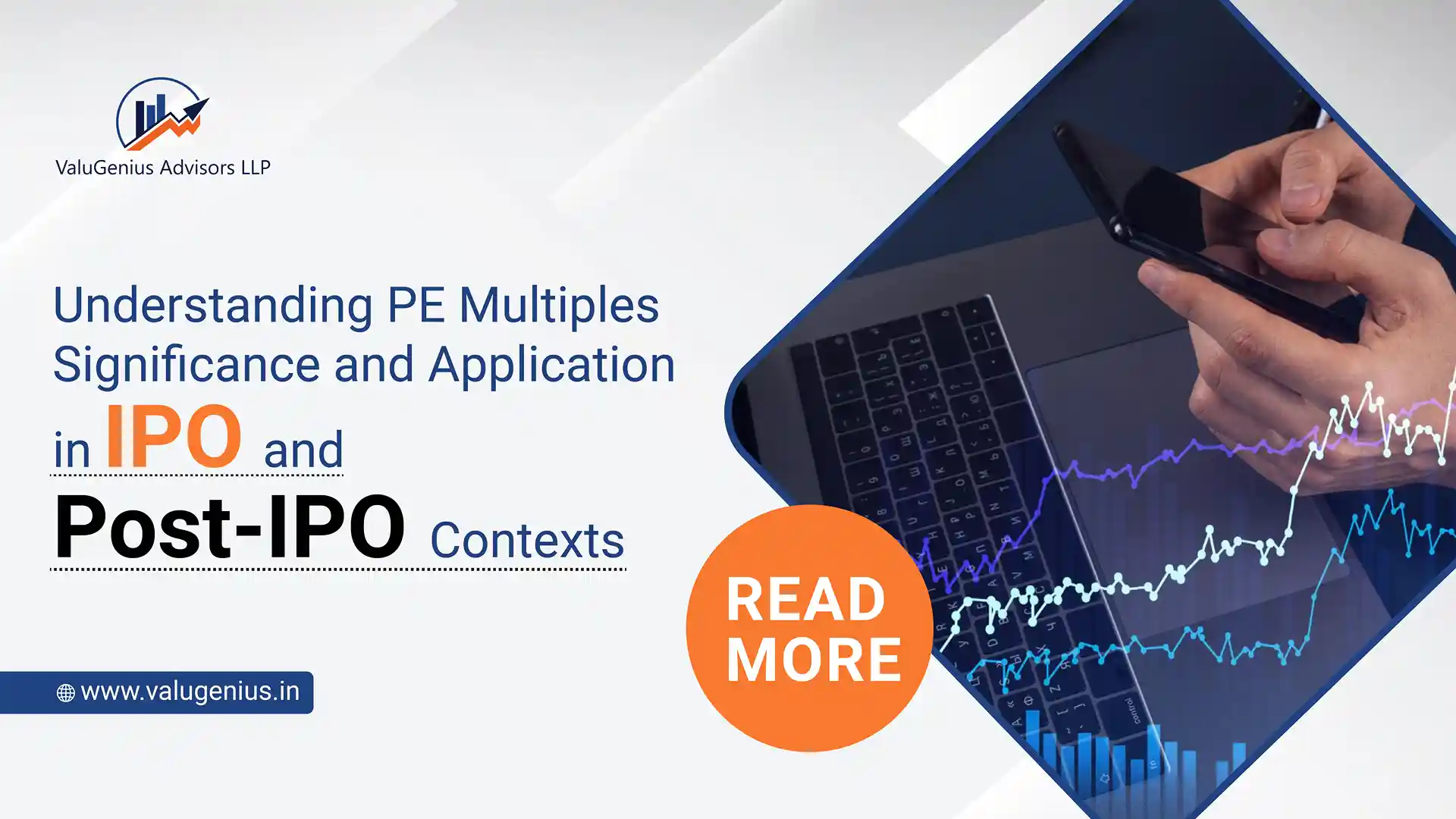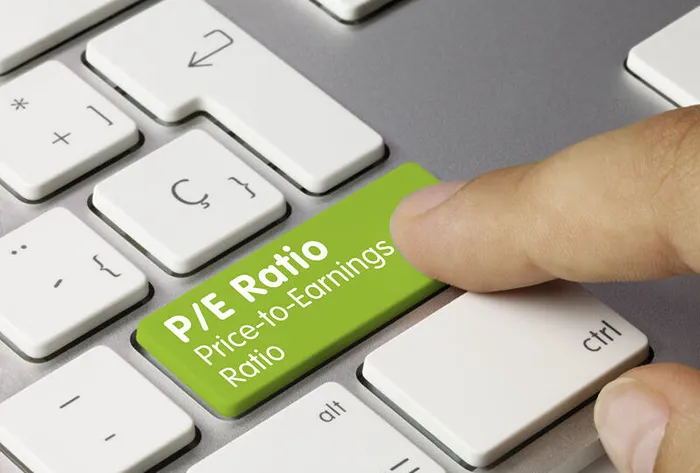
Understanding PE Multiples
( Significance and Application in IPO and Post-IPO Contexts )
The Price-to-Earnings (PE) multiple stands as one of the most widely used valuation metrics in financial markets. It plays a crucial role in both Initial Public Offerings (IPOs) and the trading performance post-listing. This valuation tool compares a company’s current share price to its earnings per share (EPS), providing insights for investors, analysts, and business owners involved in IPO pricing and stock market analysis.
Understanding the application of PE multiples across pre-IPO and post-IPO contexts helps in benchmarking valuations, setting offering prices, and identifying growth potential across market cycles. Firms offering the Best IPO Services in Mumbai often rely on PE multiples as a core component of IPO advisory strategies.
Fundamentals of PE Multiples
The PE ratio essentially shows how much investors are willing to pay per unit of a company’s earnings. It represents market sentiment regarding future growth and profitability.
Formula for PE Ratio:
PE Ratio = Market Price per Share / Earnings per Share (EPS)
This seemingly simple metric can vary drastically across sectors. For example, high-growth tech companies typically attract higher PE multiples than capital-intensive industries like utilities. To assess valuation accurately, PE should be compared against industry benchmarks, historical averages, and overall market levels.
For instance, a PE ratio of 25 might seem high in isolation, but if sectoral PE averages 40, the company may actually be undervalued. A Business Valuation expert would weigh such contextual insights to provide a clearer valuation outlook.

Historical Perspective and Market Evolution
Traditionally, a PE range of 10–20 was deemed reasonable, but this threshold has widened with evolving business models. Tech and SaaS-based businesses with scalable models and higher future growth potential have pushed up acceptable PE ranges, making higher multiples more common.
This shift in perception underlines that PE ratios cannot be evaluated without understanding industry trends, business models, and sustainability of earnings.
Types of PE Multiples
Different forms of PE ratios offer nuanced perspectives:
1. Trailing PE (TTM PE)
Trailing PE = Current Share Price / Earnings per Share (last 12 months)
This backward-looking metric reflects actual earnings, but it might not capture current momentum or recent business shifts.
2. Forward PE
Forward PE = Current Share Price / Projected Earnings per Share (next 12 months)
Forward PE is crucial for companies in transition or growth stages. However, as it’s based on estimates, it introduces a degree of forecast risk.
3. Normalized PE
This ratio adjusts earnings to remove one-time events or cyclical fluctuations, providing a more sustainable earnings picture.
4. Cyclically Adjusted PE (CAPE or Shiller PE)
Uses inflation-adjusted average earnings over 10 years to smooth out business cycles. More useful for market-wide analysis than for individual firms.
5. Cash-Adjusted PE
Adjusts market price by subtracting cash per share before calculating PE to reflect operational valuation.
Significance in Valuation
PE ratios provide simple yet powerful valuation indicators:
Advantages:
- Easily comparable across companies.
- Captures growth expectations.
- Serves as a sentiment barometer.
Limitations:
- Meaningless for companies with negative earnings.
- Distorted by one-time accounting items.
- Doesn’t consider cash flow or capital structure.
Investors seeking Successful IPO Listing & Pre-IPO Process insights should incorporate PE with other financial ratios and qualitative business factors.
Industry-Specific Insights
The interpretation of PE ratios must be industry-specific. High-margin tech companies deserve higher PE due to growth scalability. In contrast, asset-heavy businesses often carry lower PE due to reinvestment requirements.
In regulated industries, constraints on pricing and profitability can lead to PE compression. Thus, it’s vital to perform industry-adjusted PE analysis to ensure sound investment decisions.

PE Multiples in the IPO Process
PE multiples guide pre-IPO valuation and pricing strategies:
IPO Pricing Determination:
Bankers and valuation teams apply multiples from peer companies to the IPO candidate’s EPS—either trailing or projected—adjusting for growth, business model, and margins.
This valuation typically applies a discount due to lower liquidity and higher risk for new listings. Valuation Firm in Mumbai like Valugenius Advisor LLP help align these assumptions for precise IPO pricing.
Challenges in Pre-IPO Valuation:
- Startups or scaling businesses may lack consistent earnings.
- Forward PE introduces forecast risk.
- Changes to capital structure pre-IPO can complicate historical comparisons.

Roadshow Communication:
During IPO roadshows, PE metrics are used to justify pricing. Companies with no earnings rely on forward multiples or other metrics like revenue multiples. The quality and credibility of these forecasts play a significant role in investor decision-making.
Contact Top IPO Consultants for preparing realistic forecasts and benchmarks during the pre-IPO stage.
Post-IPO Evolution of PE Multiples
Initial Trading Volatility:
Immediately post-listing, PE ratios may fluctuate as markets reassess value. Conservative pricing often leads to PE expansion, while overly aggressive pricing may lead to contractions.
The end of the lock-up period can also affect multiples as insider selling begins.
Long-Term PE Development:
Over time, a company’s PE reflects execution consistency. Meeting or exceeding projections supports multiple expansion, while underperformance leads to revaluation.
Eventually, PE stabilizes toward industry norms—unless the company builds a durable advantage, in which case it may continue to command a premium.
Best CA firm in Borivali may guide post-IPO companies in aligning reporting practices with investor expectations to sustain valuation.
Conclusion
PE multiples remain a cornerstone of modern financial analysis, particularly in the context of IPO valuation and post-listing performance monitoring. While offering quick insights into investor sentiment and growth expectations, they must be interpreted alongside industry benchmarks, accounting adjustments, and broader business fundamentals.
From IPO planning to post-market positioning, incorporating the right PE approach helps businesses craft compelling valuation stories. For those seeking the Best Valuation Services or aiming to optimize IPO outcomes, working with trusted advisors makes all the difference.
Explore how Best IPO Consulting Services in Mumbai can guide your next IPO or valuation journey—backed by deep insight, sector knowledge, and precise execution.
